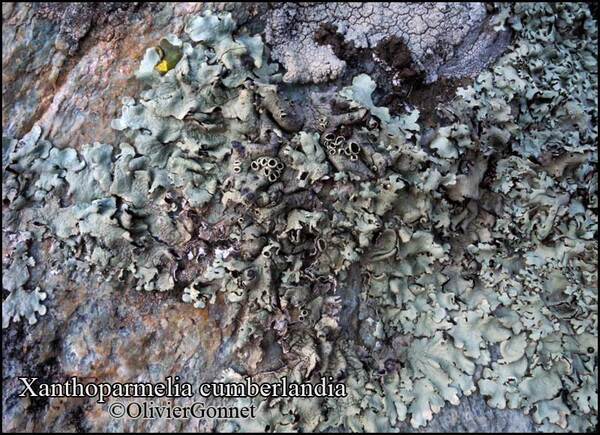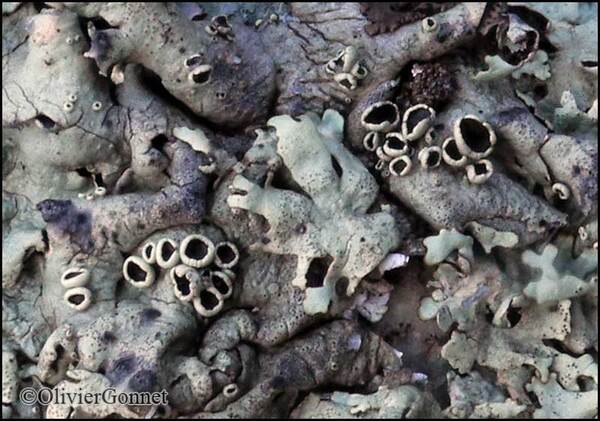Xanthoparmelia cumberlandia (Gyeln.) Hale
Phytologia, 28: 487, 1974. Basionym: Parmelia subconspersa var. cumberlandia Gyeln. - Feddes Rep., 36: 164, 1934.
Synonyms:
Distribution: N - VA (Matteucci & al. 2015c), Lig (Giordani & al. 2002b, 2009). C - Sar (Giordani & al. 2002b, 2013, Rizzi & al. 2011).
Description: Thallus foliose, heteromerous, dorsiventral, adnate, with irregular to sublinear, 0.1-0.5 mm wide, contiguous to imbricate, 1-2 mm wide lobes which often become densely laciniate in central parts, forming 6-12 cm wide rosettes. Upper surface yellowish green; lower surface pale brown or dark brown-mottled, with sparse, pale brown, simple, 0.3-0.8 mm long rhizines. Upper cortex paraplectenchymatous, with a pored epicortex, the cell walls with Xanthoparmelia-type lichenan; medulla white; lower cortex paraplectenchymatous. Apothecia lecanorine, substipitate, 2-10 mm across, with a brown disc and a smooth thalline margin. Epithecium brown; hymenium and hypothecium colourless; paraphyses simple; hypothecium colourless. Asci 8-spored, clavate, the K/I+ blue tholus penetrated by a faintly amyloid apical cushion with parallel or diverging flanks, the wall K/I-, surrounded by a K/I+ blue outer layer, Lecanora-type. Ascospores 1-celled, hyaline, ellipsoid, 9-10 x 4-5 µm. Pycnidia common, immersed. Conidia dumbbell-shaped, 5-7 μm long. Photobiont chlorococcoid. Spot tests: upper cortex K-, C-, KC+ yellowish, P-; medulla K+ yellow-orange, C-, KC+ orange-red, P+ orange, UV-. Chemistry: uppper cortex with usnic acid; medulla with the stictic acid syndrome (stictic, constictic, and norstictic acids, with traces of connorstictic, cryptostictic and peristictic acids). Note: on siliceous rocks, perhaps more widespread in Mediterranean Italy.
Growth form: Foliose, broad lobed
Substrata: rocks
Photobiont: green algae other than Trentepohlia
Reproductive strategy: mainly sexual
Commonnes-rarity: (info)
Alpine belt: absent
Subalpine belt: absent
Oromediterranean belt: absent
Montane belt: absent
Submediterranean belt: absent
Padanian area: absent
Humid submediterranean belt: absent
Humid mediterranean belt: very rare
Dry mediterranean belt: rare
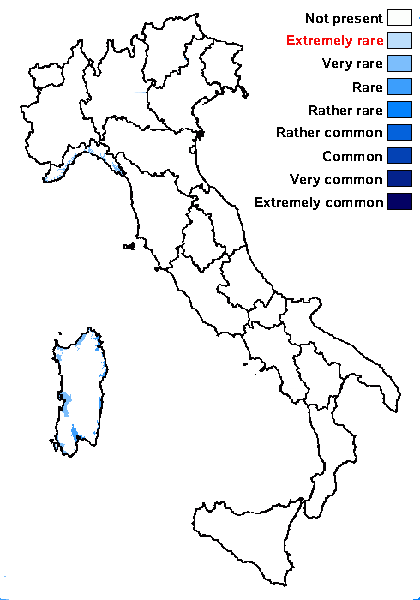
Predictive model
Herbarium samples
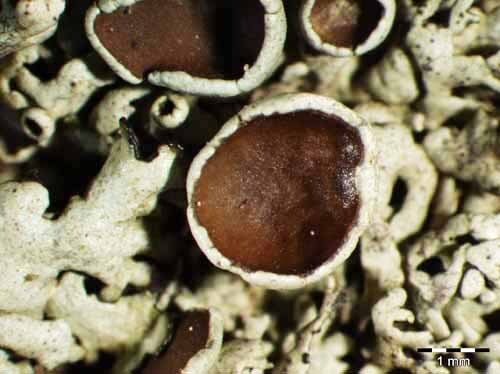
Harrie Sipman – Source http://www.bgbm.fu-berlin.de/sipman/Zschackia/AegeanLichens/CaloplacaAC.htm - As Caloplaca oasis


P.L. Nimis; Owner: Department of Life Sciences, University of Trieste
Herbarium: TSB (34831)
2002/02/13
undersurface
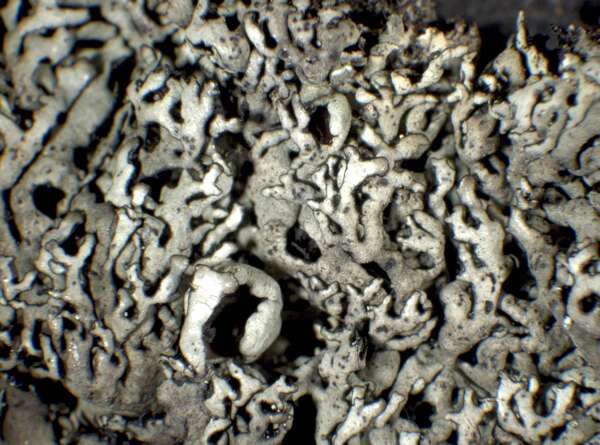

P.L. Nimis; Owner: Department of Life Sciences, University of Trieste
Herbarium: TSB (34831)
2002/02/13
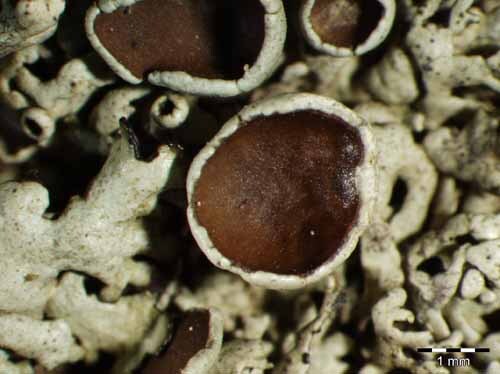
Harrie Sipman – Source http://www.bgbm.fu-berlin.de/sipman/Zschackia/AegeanLichens/CaloplacaAC.htm - As Caloplaca oasis
Growth form: Foliose, broad lobed
Substrata: rocks
Photobiont: green algae other than Trentepohlia
Reproductive strategy: mainly sexual
Commonnes-rarity: (info)
Alpine belt: absent
Subalpine belt: absent
Oromediterranean belt: absent
Montane belt: absent
Submediterranean belt: absent
Padanian area: absent
Humid submediterranean belt: absent
Humid mediterranean belt: very rare
Dry mediterranean belt: rare

Predictive model
| Herbarium samples |

Harrie Sipman – Source http://www.bgbm.fu-berlin.de/sipman/Zschackia/AegeanLichens/CaloplacaAC.htm - As Caloplaca oasis


P.L. Nimis; Owner: Department of Life Sciences, University of Trieste
Herbarium: TSB (34831)
2002/02/13
undersurface


P.L. Nimis; Owner: Department of Life Sciences, University of Trieste
Herbarium: TSB (34831)
2002/02/13

 INDEX FUNGORUM
INDEX FUNGORUM
 GBIF
GBIF
